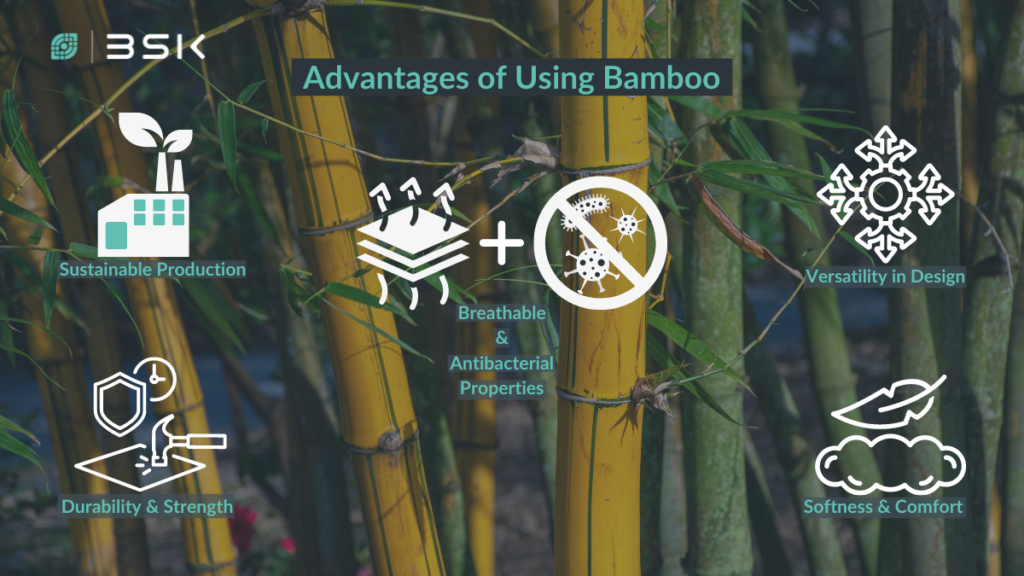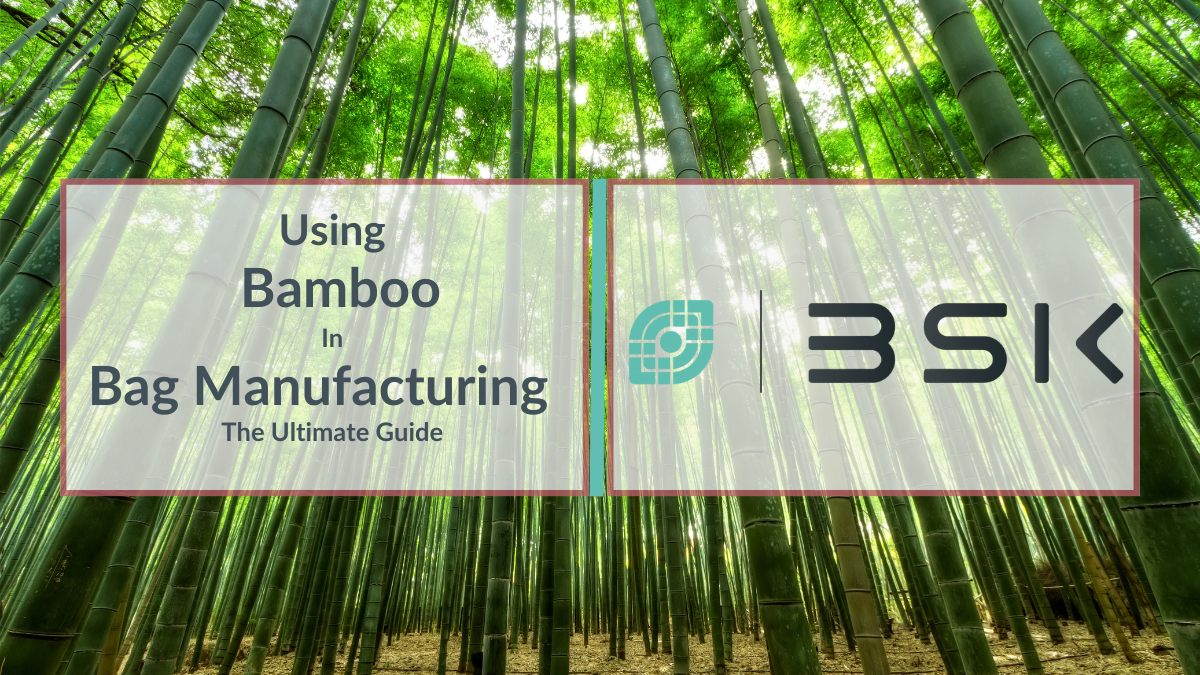Using bamboo fabric reflects an environmentally conscious decision because of its sustainability potential and ethical production methods. The importance of sustainable and ethical resource utilization has become increasingly clear, demanding heightened attention across the board. This is particularly crucial for consumers, who are at the end of the supply chain. It’s crucial that everyone involved in creating these essential items, whether they’re practical or luxury, starts with sustainability in mind. Designers and manufacturers alike must prioritize this from the beginning. In the end, it’s all about creating that perfect bag. Make sure you’re not bamboozled; continue reading for further information!
What is Bamboo Fabric?
Different production processes create various forms of this fabric derived from the plant. While the fabric dates back thousands of years, recent technological advancements have greatly refined its production. However, it’s important to recognize that bamboo fabric has different qualities. The output of the most common form, viscose, involves toxic chemicals that pose environmental and health risks. Yet, manufacturers can produce high-quality bamboo fabric using either a closed-loop process that recycles most chemicals and water or a mechanical process employing natural enzymes to avoid harmful chemicals. These methods offer organic, environmentally friendly fabric choices. Notably, its fabric’s breathability and stretchiness make it ideal for underwear, socks, and bags.

Advantages
Bamboo fabric presents distinct advantages from its inherent properties and benefits when considering the production of bags. Understanding these advantages can illuminate why bamboo fabric is increasingly favored for this application. Below, we’ll explore the key advantages of utilizing the fabric for bag production, highlighting specific features that make it particularly suitable for certain types of bags and providing examples that showcase these benefits.
Sustainable Production
One of the foremost advantages of bamboo fabric is its environmental sustainability. This fabric is a fast-growing, renewable resource that doesn’t require pesticides or fertilizers and uses minimal water compared to cotton. This makes cultivating bamboo for fabric much less taxing on the environment, appealing to eco-conscious consumers and companies aiming for sustainability.
Durability and Strength
Bamboo fabric is known for its durability, which translates into longer-lasting bags. The inherent strength of bamboo fibers means that bags made from these materials can withstand wear and tear from daily use better than those made from weaker fibers. This quality is particularly beneficial for tote bags, backpacks, or travel bags that must endure heavy loads and frequent use.
Softness and Comfort
Despite its durability, bamboo fabric is remarkably soft to the touch. This softness makes it an excellent choice for bags often carried against the skin, like shoulder or sling bags. The comfort factor of bamboo fabric enhances the user experience, making it a preferred fabric for bags designed for prolonged wear.
Breathable and Antibacterial Properties
Bamboo fabric is naturally breathable and has antibacterial properties. While the latter may not be as potent in processed bamboo as in its natural state, the breathability makes bamboo bags ideal for gym bags or shoe compartments within travel bags. These properties help to reduce moisture and odors, ensuring that belongings stay fresh.
Versatility in Design
The versatility of bamboo fabric, which can be woven into both lightweight and heavyweight textures, allows for a wide range of bag types. From elegant handbags and clutches that benefit from bamboo’s silky texture to sturdy grocery totes and sports bags, bamboo fabric can adapt to various design needs.
Limitations
Considering its application in bag manufacturing, it faces noteworthy challenges. Renowned for its durability, as a raw material it undergoes a process to become fabric, affecting its final strength and longevity, thus making the suitability of specific bamboo fabric types for bags variable. For instance, bamboo linen, produced through a mechanical process without chemical alteration, retains the strength inherent in bamboo fibers, making it strong, long-lasting, and likely suitable for durable bags. On the other hand, the market predominantly offers fabric made through chemical processes, such as bamboo viscose production, potentially giving the final fabric a different level of durability. This process can also introduce significant environmental downsides and workplace hazards due to the toxic chemicals used.
Bamboo viscose production is cheap, suggesting that bags made from this material could be more affordable for manufacturers and consumers. However, it’s imperative to consider its production’s environmental and health costs. The viscose process involves:
- Harmful chemicals like carbon disulfide.
- Leading to significant waste and potential contamination.
- Raising serious environmental and ethical concerns.
Moreover, the fabric’s claim to environmental sustainability mainly applies to those produced through closed-loop systems or mechanical processes, which might incur higher costs. The environmental impact of bamboo fabric in bag manufacturing greatly depends on the production method. Closed-loop production processes reuse solvents and avoid chemical alteration of the cellulose structure, offering a more eco-friendly option by significantly reducing waste and environmental contamination. Conversely, conventional viscose production methods are less sustainable due to the chemical waste and potential ecological damage.
Production and Manufacturing Considerations
Understanding Bamboo For Manufacturing for Bag Production
Creating bamboo fabric entails some steps, influenced by the fabric’s intended use and the desired characteristics of the final product. There are primarily two methods for converting into fabric: the viscose method, which is chemically intensive, and the mechanical process, known for its environmental friendliness.
Viscose Method:
In the cellulose extraction process, bamboo or wood is broken down and chemically treated to obtain cellulose, which is then transformed into a viscous solution using carbon disulfide. This solution is then pushed through a spinneret to form strands, which are solidified into filaments and spun into yarn to create fabric.
Concerns arise due to the use of harmful chemicals like carbon disulfide, posing risks to workers and sustainability. To address this, some manufacturers implement closed-loop production, reusing solvents to minimize environmental impact and produce high-quality, eco-friendly fabric with the texture and strength of traditional linen.
An alternative, mechanical process involves using enzymes to break down fibers before mechanically processing them into yarn to create bamboo linen, known for its durability and silky feel. This method offers an environmentally conscious option for textile production.
Considerations for Bag Manufacturing:
Manufacturing bamboo fabric for bags is a complex process that demands specific machinery for weaving or knitting, adjustments for dyeing and finishing, high-quality sewing machines, precision cutting tools, and meticulous environmental controls. Each step requires careful consideration of the fabric’s unique properties and environmental impact to ensure a durable and sustainable final product.
Sustainability and Environmental Impact of Using Bamboo Fabric
This fabric stands out for a few reasons, primarily due to its biodegradability, recyclability, and the renewable nature of bamboo as a resource. Here’s why the fabric is gaining attention as a sustainable choice:
Highly Renewable Resource: Bamboo grows up to a meter daily in the right conditions, making it an excellent alternative to conventional cotton and synthetic fibers.
Eco-Friendly Growth: Bamboo can thrive in diverse climates without pesticides or fertilizers, reducing the environmental footprint.
Positive Impact on the Carbon Cycle: Bamboo plants release 35% more oxygen and absorb more carbon dioxide compared to equivalent stands of trees.
Biodegradability and Recyclability: Products made from 100% bamboo are entirely biodegradable in soil by microorganisms and sunlight, reducing textile waste in landfills.
Chemical-Free Processing: The mechanical processing method, known as bamboo linen, avoids chemical additives, making it safer for the environment.
Certifications and Eco-Friendly Practices
Various certifications and practices are instrumental in supporting the sustainable production of bamboo fabric. These include OEKO-TEX Standard 100: This certification ensures the textile product is free from harmful chemicals. It focuses on the entire manufacturing process and tests for a comprehensive range of harmful substances. FSC Certification: This certification confirms sustainable harvesting. It ensures that the bamboo fibers used in the fabric are sourced from responsibly managed forests that provide environmental, social, and economic benefits. Closed-Loop Process for Viscose: This innovative process aims to recover and reuse solvents, significantly lowering the environmental impact compared to traditional viscose rayon production. The closed-loop system minimizes waste and reduces the use of harmful chemicals, making it an environmentally friendly choice for fabric production.
Conclusion of Using Bamboo In Bag Manufacturing
The use of bamboo fabric in bag production is a sustainable and ethical choice. While some production methods pose environmental and health risks, advancements are being made to minimize these negatives. Technologies like closed-loop systems and mechanical processing are reducing the use of toxic chemicals, making it an increasingly eco-friendly option. This progress highlights the comment on ethical and sustainable practices in the fashion industry. By choosing bamboo fabrics produced through environmentally friendly methods, both consumers and manufacturers can contribute to a more sustainable future.
However, not all bamboo fabrics are the same. Common bamboo viscose production involves toxic chemicals, which pose environmental and health risks. On the other hand, while more eco-friendly, mechanical processes might be costlier. This highlights various bamboo fabric production methods’ differing ecological impacts and ethical considerations. Moreover, understanding bamboo fabric’s care requirements and potential limitations is crucial, especially in bag manufacturing.
Bamboo fabric presents a promising option for bag manufacturing because of its sustainability, softness, and durability. However, it’s important to consider the limitations and environmental implications associated with its various production methods. Manufacturers and consumers should carefully weigh these factors to make informed, ethical, and sustainable choices when selecting materials for bag production. With the right approach and awareness, the fabric can meet the increasing demand for environmentally conscious and ethically produced goods.

This is awesome article. Thanks for sharing such an informative passage.
I am looking to get into bamboo bags as business venture, and would appreciate any other resources you have, including scientific studies, manufacturing facts and figures and also a list of “linen” type bamboo products, from Yarn all the way up to manufactured bags.
Cheers
Justin